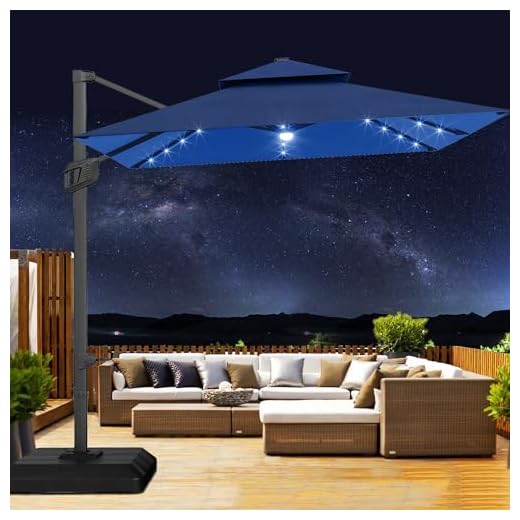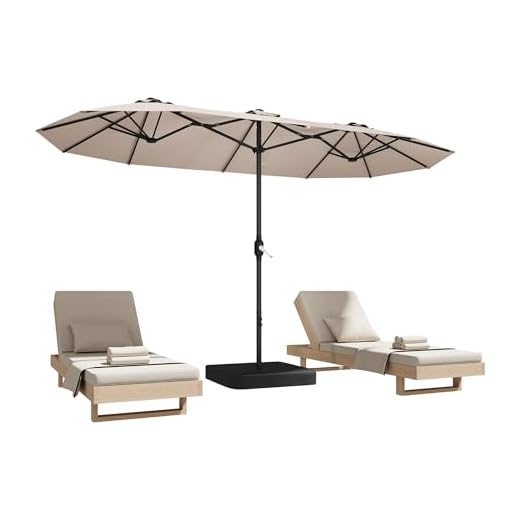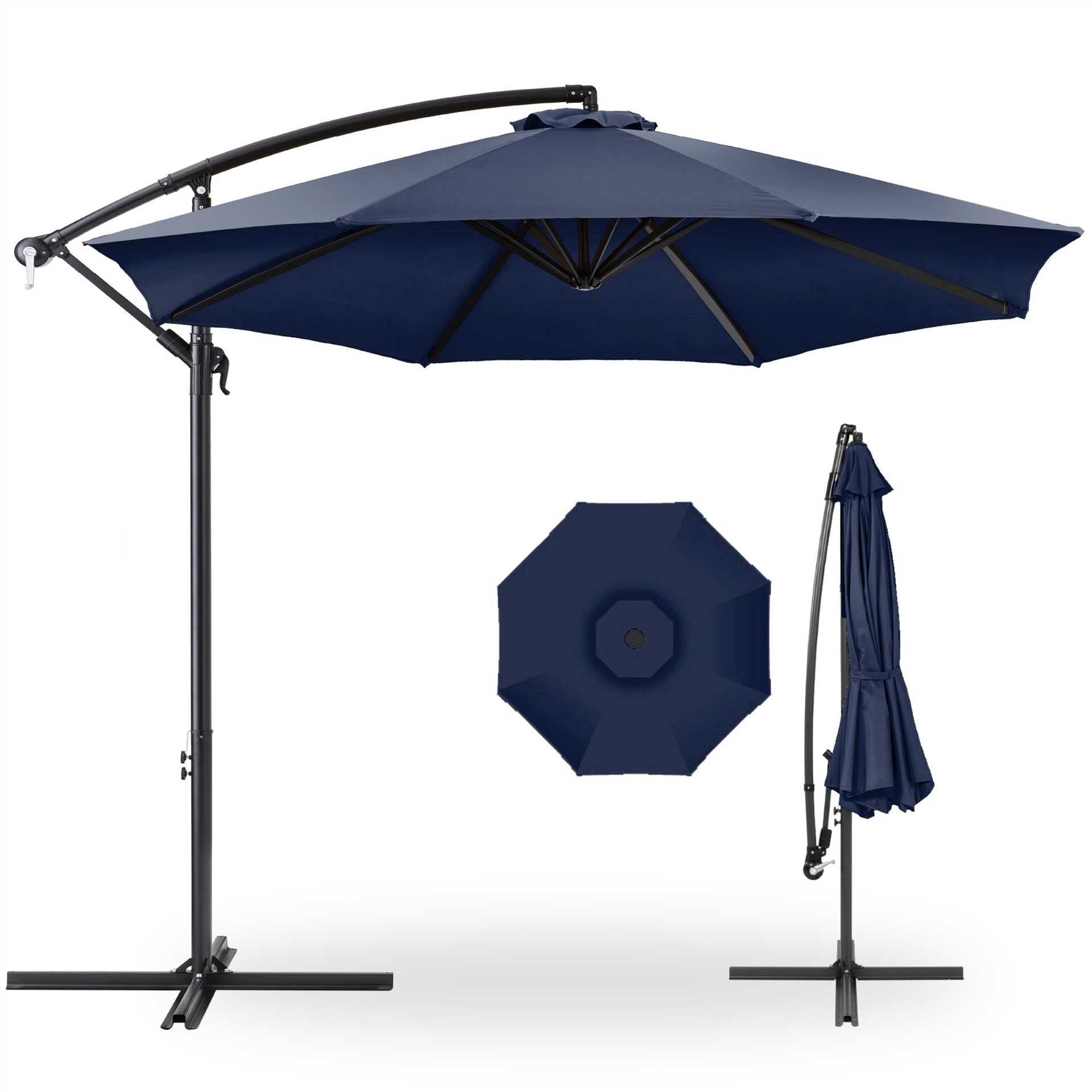




Choosing the right shade solution can drastically enhance your outdoor experience. Look for a model that provides ample coverage while allowing flexibility in positioning. A well-designed cantilever shade canopy offers the ability to tilt and rotate, ensuring you stay protected from the sun throughout the day.
This article will guide you through the most important aspects to consider when selecting a shade solution for your backyard or patio. From materials and stability to ease of operation and aesthetics, understanding these factors will help you make an informed choice.
Whether you’re a homeowner looking to upgrade your outdoor space or a designer seeking inspiration for your projects, this information is tailored to assist you. By the end, you’ll have a clear picture of the key attributes that make a shade structure functional and stylish.
Best Qualities in an Offset Patio Umbrella
When selecting a cantilever shade solution, prioritize stability, ease of use, and coverage area. A well-designed product allows for effortless adjustments, ensuring that you can reposition it as the sun moves throughout the day.
Durability is key. Look for fabrics that are UV resistant and water-repellent, ensuring longevity even in various weather conditions. Additionally, sturdy construction materials such as aluminum or steel frames provide reliable support.
Key Features to Consider
- Adjustability: A model with a rotating or tilting mechanism helps to block sunlight effectively throughout the day.
- Size: Opt for a generous diameter to provide ample shade for your outdoor seating area.
- Base Weight: A heavy base is crucial for stability, preventing tipping during gusty winds.
- Portability: Consider whether the design includes wheels for easy relocation when necessary.
Finding a product with a high-quality canopy fabric is essential. Look for options that are fade-resistant and easy to clean. A double-layer design can enhance durability and provide extra protection against the elements.
Lastly, aesthetics should not be overlooked. Choose colors and patterns that complement your outdoor decor, enhancing your space’s overall appeal.
Durability of Materials Used in Construction
Choosing a structure that withstands various weather conditions is paramount. Focus on materials that offer long-lasting performance, especially in outdoor settings. A quality frame is essential for ensuring stability and resilience against wind and rain.
Aluminum and steel are two of the most reliable options for the frame construction. Aluminum is lightweight, resistant to rust, and can endure exposure to moisture without deteriorating. Steel, while heavier, provides superior strength and can be treated to resist corrosion, making it a solid choice for durability.
Fabric Considerations
The canopy material should also be durable, with options like solution-dyed acrylic and polyester being popular. Solution-dyed fabrics resist fading and are less likely to succumb to mildew, ensuring the canopy maintains its color and integrity over time.
- Solution-dyed acrylic: Offers UV protection and water resistance.
- Polyester: Often more affordable but may require additional treatments for UV and water resistance.
Additionally, consider the stitching and seams. Double-stitched seams can enhance durability, preventing fraying and leaks in the fabric. Reinforced corners are another critical feature that can help the canopy withstand tension and stress.
Lastly, ensure that any materials used are rated for outdoor use, as this can significantly impact longevity. Selecting quality components will lead to better performance and a longer lifespan for your outdoor shading solution.
Canopy Size and Coverage Area Considerations
Choosing the right canopy size significantly impacts the shaded area provided, influencing both comfort and usability. A larger canopy offers more coverage, making it suitable for spacious outdoor settings where multiple people may gather. Conversely, a smaller canopy can be ideal for intimate spaces, ensuring that it does not overwhelm the area while still providing protection from the sun.
It is essential to assess the specific dimensions of the outdoor space before making a decision. Measure the area where the structure will be placed and consider the layout of furniture and pathways. This ensures that the shade provided is adequate without obstructing movement or visibility.
Key Factors to Consider
- Dimensions: Evaluate the diameter or width of the canopy. A 9 to 11-foot canopy is typically suitable for a dining table, while larger options may be necessary for seating arrangements.
- Shape: Round canopies are great for central placements, while rectangular or square options provide more versatility in tight spaces.
- Height: Ensure the height allows for comfortable movement underneath, especially when positioned over tables or seating.
Additionally, consider the angle of the sun and how it changes throughout the day. A canopy that can be adjusted for tilt will enhance coverage during different times, maximizing shaded areas as the sun moves.
Ease of Adjustment and Mobility Features
Adjustment mechanisms play a significant role in the usability of a cantilever shade structure. Look for options that offer smooth and effortless repositioning. Crank systems are popular for their ease of use, allowing users to raise or lower the canopy with minimal effort. Additionally, a tilt function can enhance versatility, enabling the canopy to block sunlight at various angles throughout the day.
Mobility features are equally important. A base with wheels simplifies relocation, making it easy to shift the shade structure according to the sun’s position or your outdoor layout. Ensure that the wheels are sturdy and lockable to provide stability when the umbrella is in use. A lightweight frame can also contribute to ease of movement, allowing for quick adjustments without requiring additional assistance.
Additional Considerations
- Crank Mechanism: Look for a design that allows for smooth operation without excessive effort.
- Tilt Mechanism: A range of tilt options can enhance functionality, providing shade at various angles.
- Wheeled Base: Ensure the base is equipped with durable wheels for easy movement and repositioning.
- Stability Locks: Features to secure the structure during use are crucial for safety.
- Weight: A lightweight design aids in mobility while maintaining stability when anchored.
Wind Resistance and Stability Factors
Choosing a shade structure requires careful attention to its ability to withstand windy conditions. Wind resistance is a critical feature that directly impacts the longevity and safety of the canopy. A well-designed canopy should have a strong frame and a fabric that can endure gusts without tearing or dislodging.
Stability is influenced by multiple factors. The weight of the base is one of the most significant elements. A heavier base will anchor the structure more effectively, preventing it from tipping over. Additionally, the design of the frame plays a role; a cross base often provides better support than a single pole. Materials such as aluminum or steel offer durability, while the shape of the canopy can reduce wind resistance.
Key Elements for Wind Resistance
- Frame Material: Opt for rust-resistant metals like aluminum or galvanized steel.
- Base Weight: Ensure the base weighs enough to prevent tipping; consider adding weights if necessary.
- Canopy Design: Choose a design that allows wind to flow through, reducing pressure on the fabric.
- Anchoring Options: Look for canopies with additional anchoring systems for enhanced stability.
Testing the wind resistance of a shade structure can be accomplished through various methods. Observing its performance during moderate winds can provide insight into its durability. Additionally, many manufacturers conduct wind tunnel tests to simulate extreme conditions.
Incorporating these considerations into your selection process will enhance the safety and usability of your shade solution, ensuring it remains functional in various weather conditions.
UV Protection and Fabric Quality Standards
Choosing a shade solution requires careful attention to UV protection and fabric quality. Fabrics used in outdoor canopies should offer adequate defense against harmful ultraviolet rays, which can lead to skin damage and fading of colors over time.
Look for materials labeled with a high UPF (Ultraviolet Protection Factor) rating, ideally 50 or more. This rating indicates the fabric’s ability to block UV radiation. In addition to UPF, consider the weave and density of the material, as these factors contribute to its overall protective capabilities.
Fabric Composition
Common materials include polyester, acrylic, and vinyl. Each has its own advantages:
- Polyester: Durable and water-resistant, but may require additional UV treatment.
- Acrylic: Naturally resistant to UV rays and fading, offering great longevity.
- Vinyl: Provides excellent waterproofing and UV resistance, but can be heavier and less breathable.
In addition to UV protection, fabric quality standards should also address factors such as colorfastness, mildew resistance, and ease of cleaning. Fabrics treated with special coatings can enhance these characteristics, ensuring that your shade solution remains effective and visually appealing over time.
Maintenance Tips
To maximize the lifespan of your shade structure, regular maintenance is necessary. Here are some tips:
- Clean the fabric periodically to prevent dirt and mold buildup.
- Store the canopy in a dry place during off-seasons to avoid moisture-related damage.
- Inspect for wear and tear, replacing components as needed to maintain structural integrity.
By prioritizing UV protection and fabric quality, you can ensure a safe and comfortable outdoor experience for years to come.
Design Aesthetics and Color Options Available
Selecting the right design and color for your outdoor shade structure significantly enhances your outdoor space. Consider fabrics that not only provide protection from UV rays but also complement your existing decor. Look for options that feature various textures and patterns, allowing for a personalized touch to your patio setting.
Colors play a crucial role in setting the mood of your environment. Neutral shades like beige, gray, and white offer versatility and blend seamlessly with many styles, while bold colors such as navy blue, deep red, or emerald green can create a striking focal point. Additionally, patterns like stripes or florals can introduce a playful element to your outdoor area.
Color Options to Consider
- Neutral Tones: Beige, gray, and tan for a classic look.
- Bright Colors: Coral, turquoise, and lemon yellow for a lively atmosphere.
- Earthy Shades: Olive green, burnt orange, and terracotta for a natural feel.
- Patterns: Striped, polka dot, or floral designs for added interest.
In conclusion, the aesthetic appeal of your shade structure can enhance both functionality and ambiance. Choose colors and designs that resonate with your personal style while ensuring they harmonize with your outdoor space. This thoughtful selection not only elevates the visual aspect but also contributes to a welcoming outdoor experience.
Best qualities in an offset patio umbrella
Features
| Part Number | SKY5681 |
| Model | SKY5681 |
| Color | Tan |
| Size | 10ft |
Features
| Part Number | xx2qAhHTDvvM5sSkfMtBgQiSuLH0V |
| Model | xx2qAhHTDvvM5sSkfMtBgQiSuLH0V |
| Color | Navy Blue |
| Size | 10' x 10'-with Weighted Base |
Features
| Part Number | 4336583223 |
| Model | 4336583223 |
| Color | TAN |
| Size | 9 FT |
Features
| Color | Beige |
| Size | 15ft x 9ft |
Features
| Part Number | 1 |
| Color | Tan |
| Size | 10ft LED |
Video:
FAQ:
What materials should I look for in a quality offset patio umbrella?
When choosing an offset patio umbrella, consider the materials used for both the canopy and the frame. The canopy is typically made from UV-resistant fabrics like polyester or acrylic, which help block harmful rays while providing durability against weather elements. Look for a frame made of sturdy materials like aluminum or steel, as these offer better stability and longevity. Aluminum is lightweight and rust-resistant, while steel provides additional strength. A combination of these materials will ensure your umbrella lasts for many seasons.
How does the size of an offset patio umbrella affect its functionality?
The size of an offset patio umbrella plays a significant role in its effectiveness. Larger umbrellas provide more shade and can cover a wider area, making them ideal for bigger patios or outdoor gatherings. However, they also require more space and may need stronger bases to prevent tipping. Conversely, smaller umbrellas are easier to manage and can fit in tighter spaces, but they may not provide sufficient shade for larger groups. It’s crucial to measure your outdoor space and consider how many people you want to accommodate when selecting the size of your umbrella.
What features should I consider for adjusting the height and angle of an offset patio umbrella?
Offset patio umbrellas often come with various features that allow for height and angle adjustments, enhancing their functionality. Look for models with a crank lift mechanism, which enables easy opening and closing. Some umbrellas also offer a tilt feature, allowing you to angle the canopy towards the sun for optimal shade coverage throughout the day. Additionally, check if the umbrella has a rotating base, which can provide flexibility in positioning the shade without having to move the entire unit. These features can greatly enhance your comfort and usability.
How can I ensure the stability of my offset patio umbrella?
Ensuring the stability of your offset patio umbrella is key to preventing accidents and damage. Start by selecting a heavy-duty base that matches the size of the umbrella, as a heavier base will provide better support. Fillable bases that can be weighed down with sand or water are also effective. Additionally, consider placing the umbrella in a sheltered area away from strong winds or using anchor straps for extra security. Regularly checking and tightening the connections can also help maintain stability over time.







